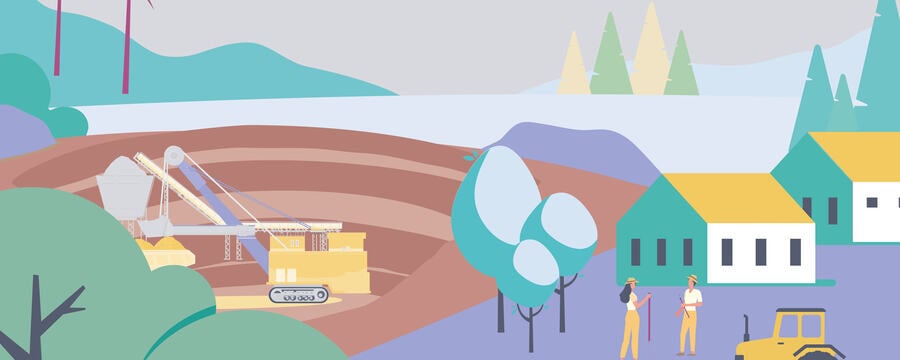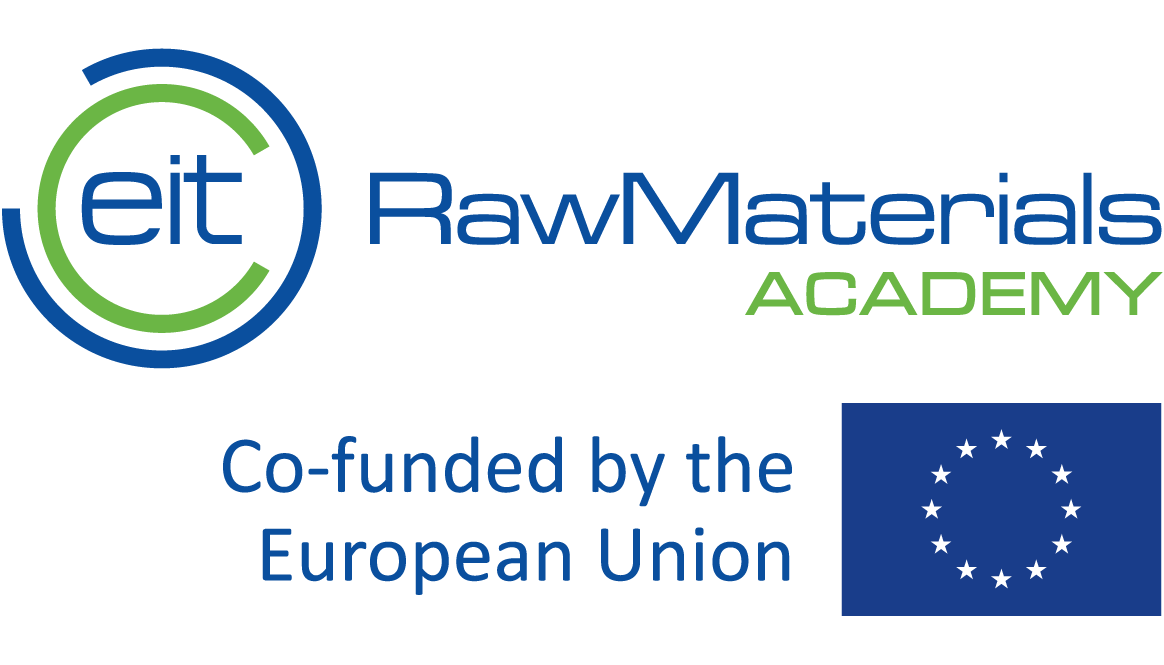Practices and system change potential for the extractive Industries

Share this step
Welcome to our ‘expert insight’ activity, which will provide interesting analyses of Land Use planning practices. We hope you will enjoy the exciting materials that we have prepared!
Current practices in Land-Use planning and their system change potential
This step is addressing Land-Use planning in the context of sustainable management and sustainability transitions in the extractive sector. We will provide insights from the SUMEX Policy Brief on Land-use planning to highlight the effectiveness of different Land-Use practices in their contribution to the sustainability transition in the extractive sector.
We have used the Leverage points (LPs) approach by Donella Meadows to screen different Land-Use practices. The LP lens provides an important compass for assessing whether we are on track in terms of changes towards sustainability in the area of Land-Use planning. The LPs describe certain points in a system or subsystem (e.g. mining, energy) at which changes can trigger transformations in a system.
Currently, one of the most prominent transformations is the transformation of the energy system, which is closely related to the extractive industries (e.g. increased need for mineral resources needed for renewable energy technologies). Such transformative processes require changes in practises at various points and involve technologies, rules and institutions (e.g. laws) and information flow, in combination with changes in attitudes, values and behavioural change (e.g. consumption patterns). While interventions at ‘shallow’ leverage points (technology, reduction of impacts, feedback loops) mainly trigger incremental changes and support adaptation and mitigation processes, interventions at ‘deep’ leverage points (e.g. rules, information, system goal) target the central control levels of a system.
Traditionally, land-use planning was embedded in the realm of public administration and government, which explains the relevance of rules and institutions as Leverage Points. The public sector still plays a fundamental role in the context of land-use, but partnerships with other actors (e.g. industry, NGOs) and the material systems dimension (e.g. infrastructure) nowadays play an equally important role. The strong relation between land-use planning regulations and the material world are evident: infrastructures, in particular, are very permanent and rigid and can be very difficult to adapt or reverse later. One can assume that rules and institutions are easy to change and adapt due to their man-made character: However, research and practise show that established regulations are often inert and very resistant to change.
Findings from our analysis of Land-Use planning practises
For our policy brief, we have identified and screened 37 practices from the SUMEX knowledge repository that target different Leverage Points and contribute to sustainable management or transformative change: the majority of identified Leverage Points belong to the categories of Design – which covers LPs 4 – 6; and Material – which covers LPs 10 – 12.
Concretely, more than 2/3 of the examined practises of the Land-Use focus area target the system’s ‘Design’ dimension, including ‘LP6 information structure and flows’ (32%), ‘LP5 rules and institutions’ (29%), and ‘LP4 power to change the rules and system structure’ (8%). These practises illustrate various institutional and regulatory aspects of land-use, such as governmental land-use strategies (e.g. Logical Framework Approach) and policies (e.g. Austrian Minerals Plan), different land-use instruments (financial incentives, funding, subsidies), or self-binding company standards that condition their own practises and standards when it comes to land-use (e.g. Anglo American Social Way Toolbox).
Furthermore, the ‘Material’ dimension, which includes ‘LP10 Material stocks and flows’, ‘LP11 The size of buffers and stabilising stocks’ and ‘LP12 Parameters and numbers’, is focused on sustainably managing material stocks and flows makes almost 25% of the screened practises in the Land-Use focus area. Those interventions have a strong focus on lowering and mitigating spatio-environmental impacts of extractive activities (minimise impact on environment and land-consumption), restoration of sites (environmental rehabilitation with focus on groundwater table) or minimising the impact on ecosystems and subsequently also improve buffer stocks through improved land-use (e.g. groundwater table). The dimensions of material and land-use are naturally closely linked: many regulations in the field of land-use have a material component. When intervening in the material dimension, it is important to note that infrastructures in particular are very long lasting and hardly reversible. However, interventions in infrastructure are characterised by a high longevity.
Implications and Outlook
Our analysis shows that the system dimensions ‘Design’ and ‘Material’ are important for interventions and actions in the focus area of Land-Use to support sustainable management and mitigation measures of extractive industries (material dimension) and to support more transformative processes in the design dimension. So far, little attention has been paid to deeper Leverage Points in the context of land-use and extractive industries, such as the target and value levels. These discussions should address issues, such as sustainability of land use, drastic reduction of land sealing (e.g. infrastructures), impacts of land intensity, and what does sustainability and the sustainability transition mean for land uses with small spatial footprints.
While these discussions are very prominent in other policy areas, this analysis suggests a backlog and a need to catch up in the extractive industries sector. Hence, it is crucial for the extractive sector to reflect on its role and position within these societal debates and which role it should play in the future (i.e. provide resources primarily needed for the renewable and zero-greenhouse gas emission system components). These approaches are not limited to the provision side, but must also target and incorporate the demand side and the need to significantly lower the mineral-resource-consumption on individual (behavior-change) and societal levels (societal change).
Share this
Sustainable Management in the Extractive Industry

Sustainable Management in the Extractive Industry


Reach your personal and professional goals
Unlock access to hundreds of expert online courses and degrees from top universities and educators to gain accredited qualifications and professional CV-building certificates.
Join over 18 million learners to launch, switch or build upon your career, all at your own pace, across a wide range of topic areas.
Register to receive updates
-
Create an account to receive our newsletter, course recommendations and promotions.
Register for free







